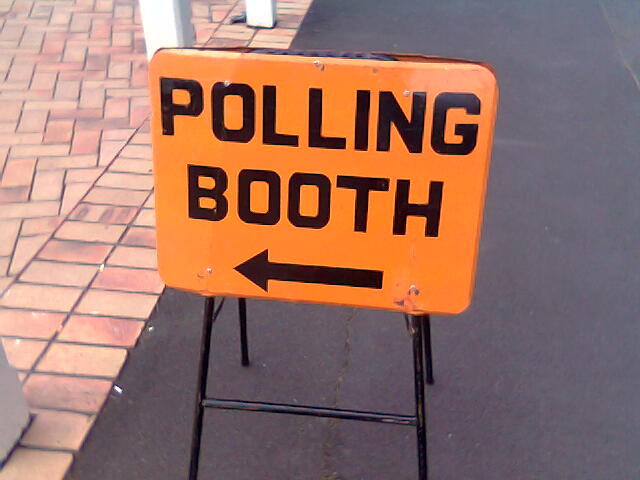By Juliana Restrepo Sanín for Denver Dialogues.
The recent US mid-term elections saw a rise in the number of women candidates across the country. The Center for American Women and Politics reports that women represented 32.4% of all nominees for the US Senate, 28.7% of all nominees for the US House, 21.9% of all nominees for governorships, and 32.7% of all nominees for statewide elected executive offices. Of these women, 102 were elected to the House of Representatives and 13 to the Senate. This means that in January, 125 women will be sitting in the US. Congress, a significant increase from the current 107. However, being elected is not the last obstacle that women with political ambitions face. Research and reports from around the world show that once elected, women face significant obstacles for advancing their political goals and careers. These obstacles include violence and harassment.
November 25th marks the beginning of the 16 days of activism to end violence against women (VAW). This global campaign was created by the Center for Women’s Global Leadership at Rutgers University in 1991. The campaign has its origins in women’s activism in Latin America; since the 1980s, activists have used this date to remember and honor the Mirabal sisters who were assassinated on November 25, 1960. The assassination of the Mirabal sisters should not be looked at only as a case of violence against women; it is, importantly, a case of political violence—the sisters were involved in efforts to resist the dictatorship of Rafael Trujillo in the Dominican Republic.
Violence against politically-active women is found in all political systems, not just dictatorships. As Marie Berry noted in a previous post, women who decide to run for office face many forms of violence, including assassination. A recent report by the Interparliamentary Union found that 85% of women members of European Parliaments have suffered psychological violence, while a staggering 25% have been victims of sexual violence.
Not exclusive to the EU, this phenomenon has been documented in all regions of the world and is known as “violence against women in politics”, or VAWIP. VAWIP refers to “behaviors that specifically target women as women to leave politics by pressuring them to step down as candidates or resign a particular political office” (Krook and Restrepo Sanin 2016, 128). These attacks occur not only during electoral campaigns, but often begin well before women have declared their candidacies and continue after they are elected.
Attacks on women in politics come from a wide array of actors, including political opponents and citizens both on and offline, as well as members of their own party, their supporters, and their families. In my own research in Bolivia, I find that women often face violence from their alternates who, with the support of political parties, pressure women to sign pre-electoral agreements in which they accept to resign once they are elected or halfway through their term. Furthermore, women are attacked regardless of what policies they support or their party affiliation—this suggests that this violence is motivated by their gender.
Furthermore, women’s organizations in Bolivia have shown that 57% of female politicians at the local level have faced some form of violence. In Peru, a survey by the National Election Jury found that 40% of candidates have faced violence, while a report from Colombia found that 63% of women in elected office have been attacked.
Physical and psychological violence frequently occur concurrent to other forms of violence, including online attacks and economic violence. Economic violence entails controlling women’s access to economic resources necessary to perform their campaigns or their jobs as elected officials. Online attacks include threats of physical and sexual violence, as well as the circulation of images and comments aimed at sexualizing or erasing women, questioning their competence for public office. In the United Kingdom, for example Stella Creasey was bombarded by rape and death threats on Twitter over her support for the inclusion of Jane Austen on British currency.
Recent gains in women’s political representation in the US represents is an important step towards greater gender parity in decision-making. However, women’s electoral success also presents a challenge: in a political landscape increasingly marred by violence and bigotry, how can violence against politically-active women be prevented? Ensuring that elected women have the chance to represent their constituents and advance their political agenda in equal conditions as men is imperative if the principles of democracy are to be sustained.








2 comments
Dear Juliana Restrepo Sanin,
You wrote: “A recent report by the Interparliamentary Union found that 85% of women members of European Parliaments have suffered psychological violence, while a staggering 25% have been victims of sexual violence.”
Unfortunately I could not find the numbers for the European Parliaments, following your link. Maybe you meant another study or you had access to the complete study, as the website only provides a brief version.
I would be very interested in the concrete results for Europe. Could you help me?
Thank you
Björn Kunter
ah, the link to the Interparliamentary Union Study leads to the wrong study (from 2016) the meant study on Europe can be found at https://www.dw.com/en/sexual-abuse-and-violence-against-women-widespread-in-europes-parliaments/a-45912982